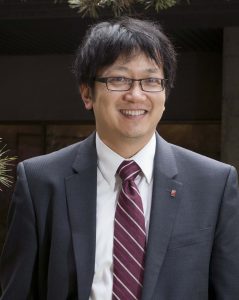Memo#104
(The third Memo from the Theme, 100 Years after the Xinhai Revolution)
By Henry Yu – henry.yu [at] ubc.ca
 Growing up in Canada, my relatives would always remind me that my family came from the same county as Dr. Sun Yat-sen, the “Father of China”, when I was picked on by other kids because I was Chinese. This seemed like cold comfort. But it turns out that my relatives understood the relationship between the rise of modern China and the role of the overseas Chinese.
Growing up in Canada, my relatives would always remind me that my family came from the same county as Dr. Sun Yat-sen, the “Father of China”, when I was picked on by other kids because I was Chinese. This seemed like cold comfort. But it turns out that my relatives understood the relationship between the rise of modern China and the role of the overseas Chinese.
A hundred years after the Xinhai Revolution, China has returned to its long standing place in global history. The role of “Chinese” who were not in China proper was crucial in its return to prominence. “Wah kiu” (huaqiao 華僑) – the Cantonese term my relatives used to refer to the “overseas Chinese” – helped fund the overthrow of the Qing Empire. 華僑 imagined a diaspora that was still tied to their homes in the Guangdong and Fujian Provinces despite centuries across the seas. Secret societies and nationalist revolutionaries like Sun found refuge and support among communities in Southeast Asia and around the Pacific.
When Sun toured North America before the 1911 revolution, he often received donations from his kin. Heungsan (Xiangshan 香山) County, from where his family came, was one of the eight counties in Guangdong Province that sent almost every single migrant to North America. Besides funding the revolution, 香山 families started the first department stores in China, funded by relatives in Australia, Hawai’i, California, and British Columbia. When China began reopening its doors in the 1980s, it was overseas Chinese who brought the crucial first wave of investments to China.
One hundred years ago, Chinese constituted ten per cent of the non-aboriginal population of British Columbia, a proportion that they have returned to recently after a century marked by racism and exclusion. By 2001, China was the top sending country for new immigrants to Canada. As Canada rethinks who we are now and in the future, note that we have been connected to the re-rise of China since the beginning.
My relatives were telling me something profound all those years before. Here we are, not at the margins of the 1911 revolution and the new China, but centrally connected. After Sun Yat-sen’s death, his home county was renamed Zhongshan. This was in honour of the revolutionary name by which Sun was known to his compatriots – Sun Zhongshan (孫中山). It means, the “middle mountain”, figuratively, around which China was built.
About the Author:
Henry Yu – Principal, St. John’s College, The University of British Columbia; and Associate Professor, Department of History.

Engaging a younger generation in learning the history of Chinese Canadians through educational video games
Links:
- 中國圍繞這座山興建——紀念辛亥革命百周年, Sing Tao Daily, September 2011. (An extended Chinese version of the Memo by Dr. Yu).
- Chinese-Aboriginal Ancestry, Chinese Canadian Stories. (Video featuring Senator Lillian Dyck).
- “Won Ton for the Soul”, Chinese Canadian Stories. (Video – project members: Al Yoshizawa and Elena Kusaka).
- “Chinese Canadian Stories”, The University of British Columbia. (New website launching in Spring 2012).
- Chinese Head Tax Database, cIRcle by The University of British Columbia, (fully searchable database of over 97,000 Chinese migrants to Canada between 1885-1949).